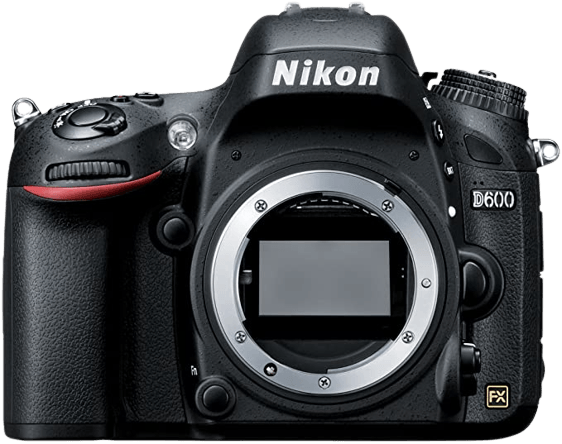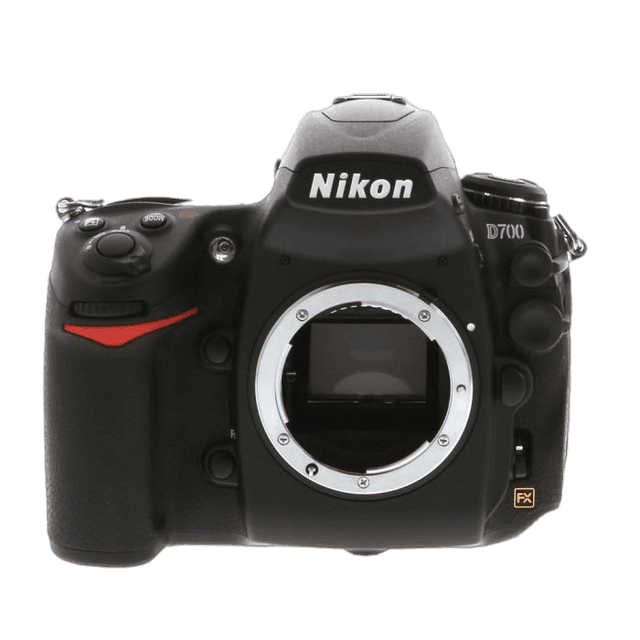Nikon D600 vs D700 Comparison
Nikon D600

Nikon D700

The Nikon D600 emerges as the winner in this comparison, scoring 66 out of 100, while the Nikon D700 trails behind with a score of 53. Both cameras are DSLR types and share similarities in specifications. However, the D600 surpasses the D700 in certain aspects.
The Nikon D600 and D700 have a common launch price range, with the D600 slightly more affordable at $2100 compared to the D700’s $2699. Both cameras have similar sizes, but the D600 is lighter, weighing 850g compared to the D700’s 1074g.
The D600’s higher score stems from its more recent release year, 2012, compared to the D700’s 2008 release. This gives the D600 an advantage in terms of newer technology and features. On the other hand, the D700 has a slightly larger size, which may appeal to those who prefer a heftier feel in their camera.
Taking these points into consideration, the Nikon D600 stands out as the superior choice due to its higher score, lighter weight, and updated technology. However, some users may still prefer the Nikon D700 for its larger size and more substantial feel.
Nikon D600 vs D700 Overview and Optics
The Nikon D600 outperforms the Nikon D700 in optics, with a score of 70 out of 100 compared to the D700’s 54. Both cameras share several specifications, including a CMOS sensor, Full Frame sensor size, Nikon F FX lens mount, and a lack of image stabilization.
The D600’s advantages lie in its higher megapixel count at 24.3 compared to the D700’s 12.1, which allows for greater image resolution and detail. Additionally, the D600 features a more advanced Expeed 3 processor, contributing to faster image processing and better overall performance. The D600’s sensor also boasts a higher DXOMARK score of 94, compared to the D700’s 80, indicating superior image quality and low-light performance.
On the other hand, the D700 has a faster shooting speed of 8 frames per second compared to the D600’s 5.5, which can be beneficial for capturing fast-moving subjects or action shots. However, this advantage is offset by the lower image quality resulting from the reduced megapixel count.
To conclude, the Nikon D600 excels in optics due to its higher megapixel count, advanced processor, and superior sensor performance. While the D700 holds an advantage in shooting speed, it falls short in overall image quality. Therefore, the D600 is the better choice for those prioritizing optics and image quality in their photography.
Nikon D600 vs D700 Video Performance
When comparing the video capabilities of the Nikon D600 and the Nikon D700, it is important to note that the Nikon D700 does not have any video functionality. This means that if video recording is a priority for you, the Nikon D600 is the only option between these two cameras.
The Nikon D600 has a video score of 57 out of 100. This camera is capable of recording Full HD video with a maximum resolution of 1920 x 1080 pixels. With a maximum frame rate of 30 frames per second, the D600 can capture smooth and detailed video footage. Additionally, the Nikon D600 has built-in time-lapse functionality, which allows for creative and engaging video content.
Comparing the Nikon D600 and Nikon D700, it is clear that the Nikon D600 is the better choice for those interested in video capabilities. The Nikon D700 does not offer any video functionality, making the D600 the only option for those seeking to record video. With its Full HD resolution, 30fps frame rate, and time-lapse features, the Nikon D600 provides solid video performance for photographers and videographers alike.
Nikon D600 vs D700 Features and Benefits
The Nikon D600 emerges as the winner in the features comparison with a score of 57 out of 100, while the Nikon D700 trails closely behind with a score of 54. Both cameras share several common specifications, including the absence of a touchscreen, flip screen, GPS, and Bluetooth. Additionally, both models offer WiFi connectivity.
The Nikon D600 holds an advantage over the D700 in terms of screen size, boasting a 3.2-inch screen as opposed to the D700’s 3-inch screen. This larger screen size allows for easier menu navigation and image review. Furthermore, the D600 surpasses the D700 in feature score, offering a slightly superior overall experience for users.
On the other hand, the Nikon D700 holds a marginal advantage in screen resolution, with 922,000 dots compared to the D600’s 921,000 dots. This slight difference in resolution may provide a marginally better image display on the D700’s screen, although the difference is minimal and may not be noticeable to users.
Taking these factors into consideration, the Nikon D600 proves to be the better camera in terms of features, thanks to its larger screen size and higher feature score. The Nikon D700, while slightly inferior in these aspects, still offers a competitive set of features that may appeal to some users. Ultimately, the choice between these two cameras will depend on individual preferences and priorities, with the D600 standing out as the superior option in terms of features.
Nikon D600 vs D700 Storage and Battery
The Nikon D600 outperforms the Nikon D700 in storage and battery with a score of 71/100, compared to the D700’s 43/100. Both cameras share the same lack of USB charging capability.
The D600 excels with its dual memory card slots that accept SD, SDHC, and SDXC cards, offering greater flexibility and storage capacity. In contrast, the D700 only has a single memory card slot, limiting its storage options to Compact Flash (Type I) cards.
However, the D700 does have an advantage in battery life, providing 1000 shots per charge with its EN-EL3e battery. The D600’s EN-EL15 battery lasts for 900 shots per charge, making it slightly inferior in this aspect.
When comparing storage and battery, the Nikon D600 proves to be the stronger option due to its superior storage capabilities. While the D700 offers longer battery life, the D600’s dual memory card slots and compatibility with various card types make it a more versatile and practical choice for photographers.
Nikon D600 vs D700 – Our Verdict
Are you still undecided about which camera is right for you? Have a look at these popular comparisons that feature the Nikon D600 or the Nikon D700:

